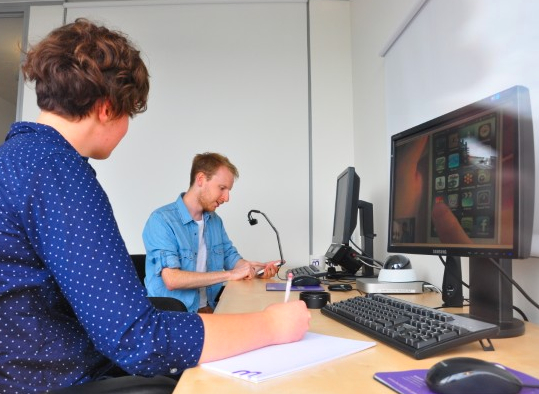We are surprised by how many people we talk to who don’t understand the difference between usability testing and market research focus groups so we thought we would clear this up.
Market research techniques, such as Focus Groups and user experience techniques, such as Usability Testing are analogous to each other but have different goals.
What is a focus group?
- Focus groups evaluate what people say
- A group of 8-12 people gather in order to discuss their opinions, attitudes and feelings on a particular topic, product or service
- This helps determine people’s motivations and preferences.
What is usability testing?
- Usability testing sessions are conducted one-on-one, with a moderator observing how a person actually uses a website, product or service
- Test participants are given realistic scenarios and tasks to perform
- Their behaviour, performance and experience is observed and analysed
- Positive insights and usability issues are uncovered, so recommendations can be made for future iterations of the website or product.
Focus Groups are based on opinions. In contrast, Usability Testing is based on behaviour. User experience researchers can get away with small samples because they are looking for behavioural insights, not opinions.
Behaviour turns out to be remarkably consistent from person to person.
For example, if you watch 5 people approach a door, and 4 of them attempt to pull it when the door needs to be pushed, you know there’s something wrong with the design. You don’t need to watch hundreds of people to draw this conclusion.
You observe that the door has a pull handle, and it’s probably that that’s causing the problem. So you replace the pull handle with a push panel, and see if you’ve fixed the problem.
Opinions vary from person to person, and a single person’s opinions may change over time, depending on the experiences they have. Therefore opinion-based research, such as focus groups, require a larger sample of people to reduce the variability in data.
Key differences
| Usability testing | Focus groups |
|---|---|
| What smaller samples do | What larger samples say |
| Observing people’s behaviours | Gathering people’s opinions |
| Determines who will use a product or service, and under what circumstances | Determines who will consider buying a product or service |
| Provides insight for the design of a product or service | Provides insight for marketing a product or service |
When to conduct focus groups
- If you want to discover how people feel about your product or service, or those of your competitors and peers.
- To generate ideas for new products, services or features.
When to do usability testing
- At any stage of development (the earlier the better) – for websites this could be from paper prototypes through to fully functioning live sites.
- To understand why people use a product or website in a certain way – analytics tell you what is happening on a website, but not why.

When evaluating websites – usability testing, not focus groups
We often find that what people say is different from what they do. Rather than showing someone a website and asking what they think of it and whether they understand it, we watch people try to use it.
Focus groups can lead to valuable insights if used appropriately and under the right circumstances – they are not the best way to uncover usability issues on a website.
Usability testing is conducted one-on-one rather than in a group setting, meaning that each individual participant’s behaviour and feedback is considered. In a focus group, one or two very opinionated people may influence others and dominate the discussion. This may mean you miss out on valuable insights from quieter people.
One-on-one user testing is a powerful tool as there’s nothing like seeing your website or product being used first hand by your target customer.
Want to learn more?





